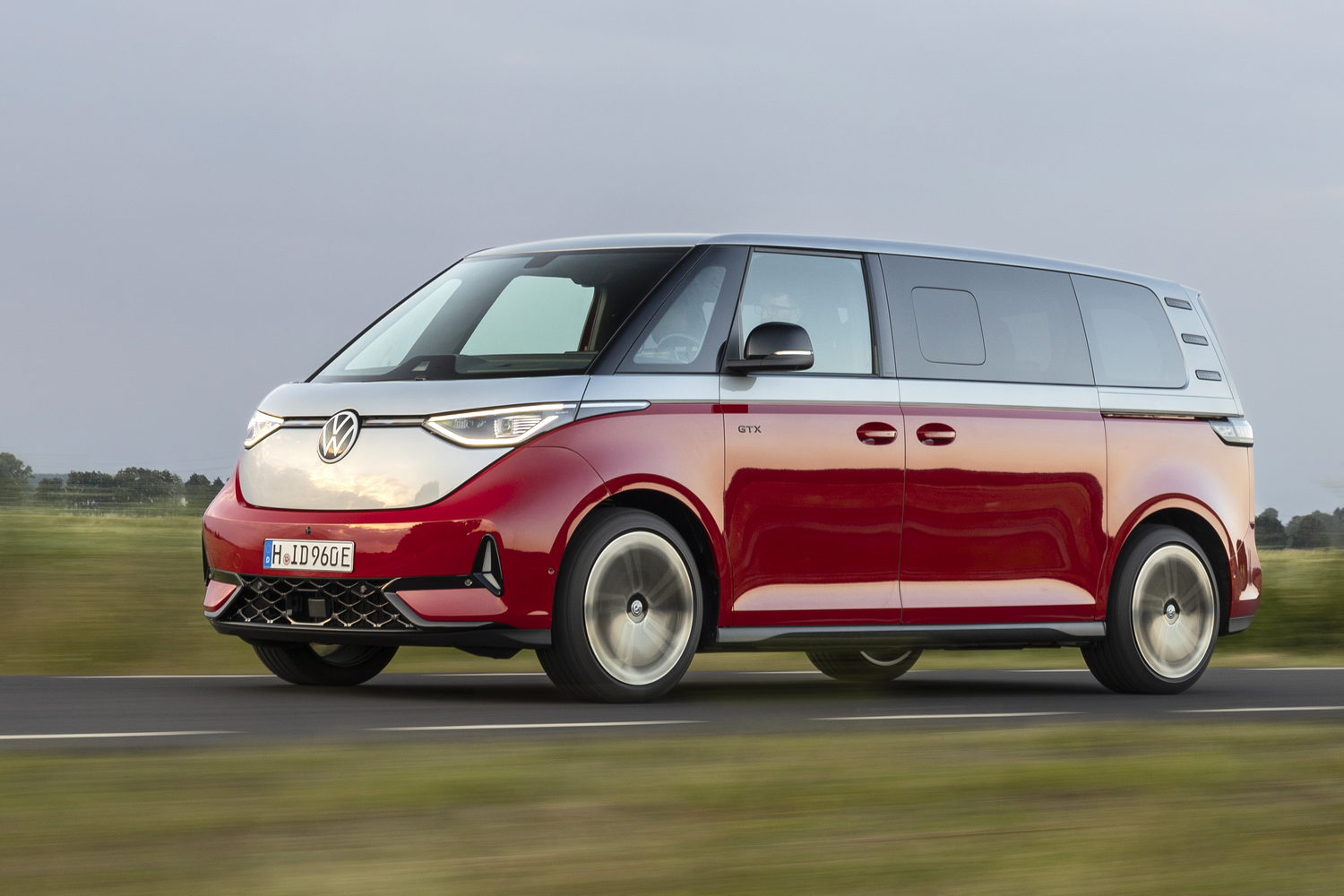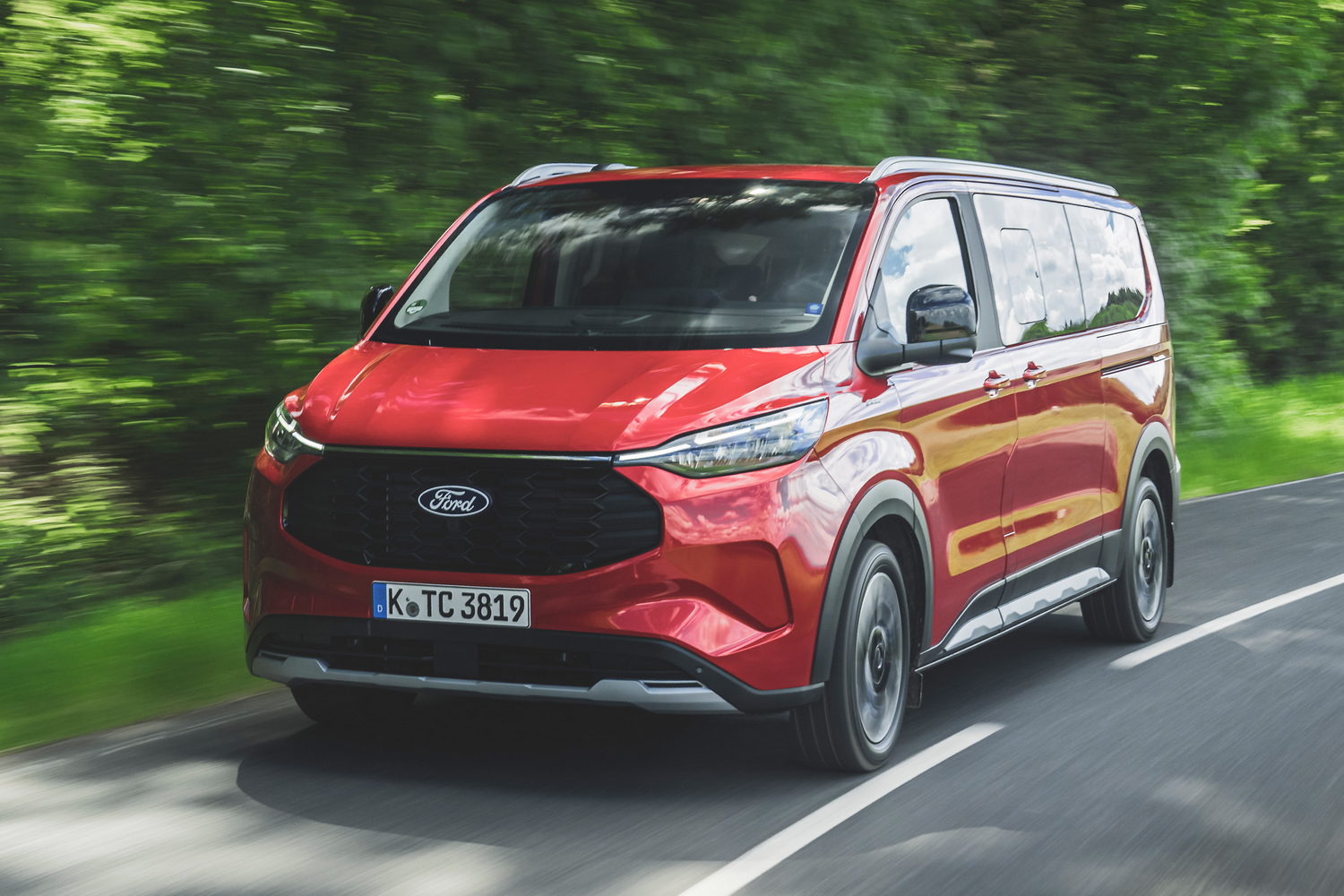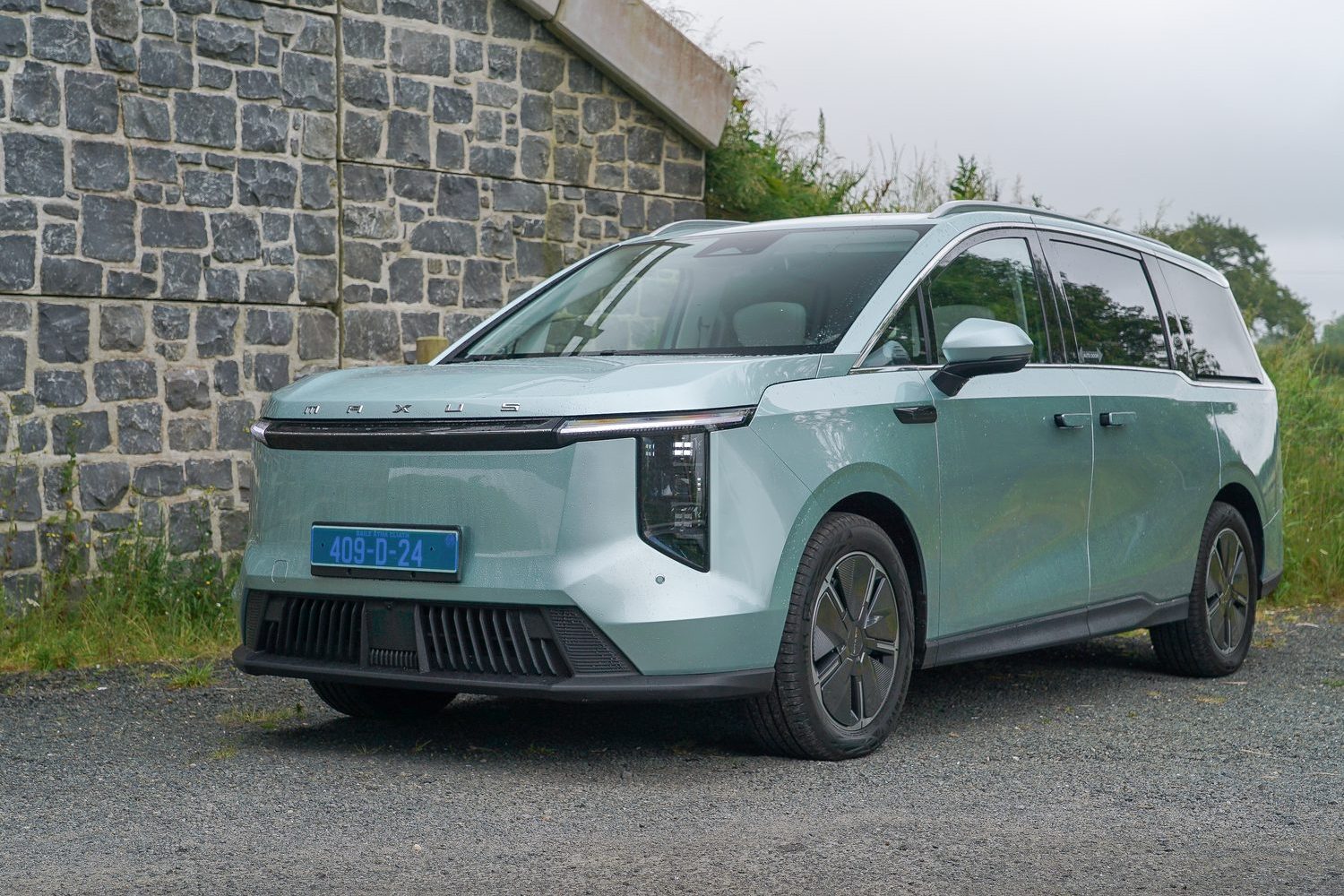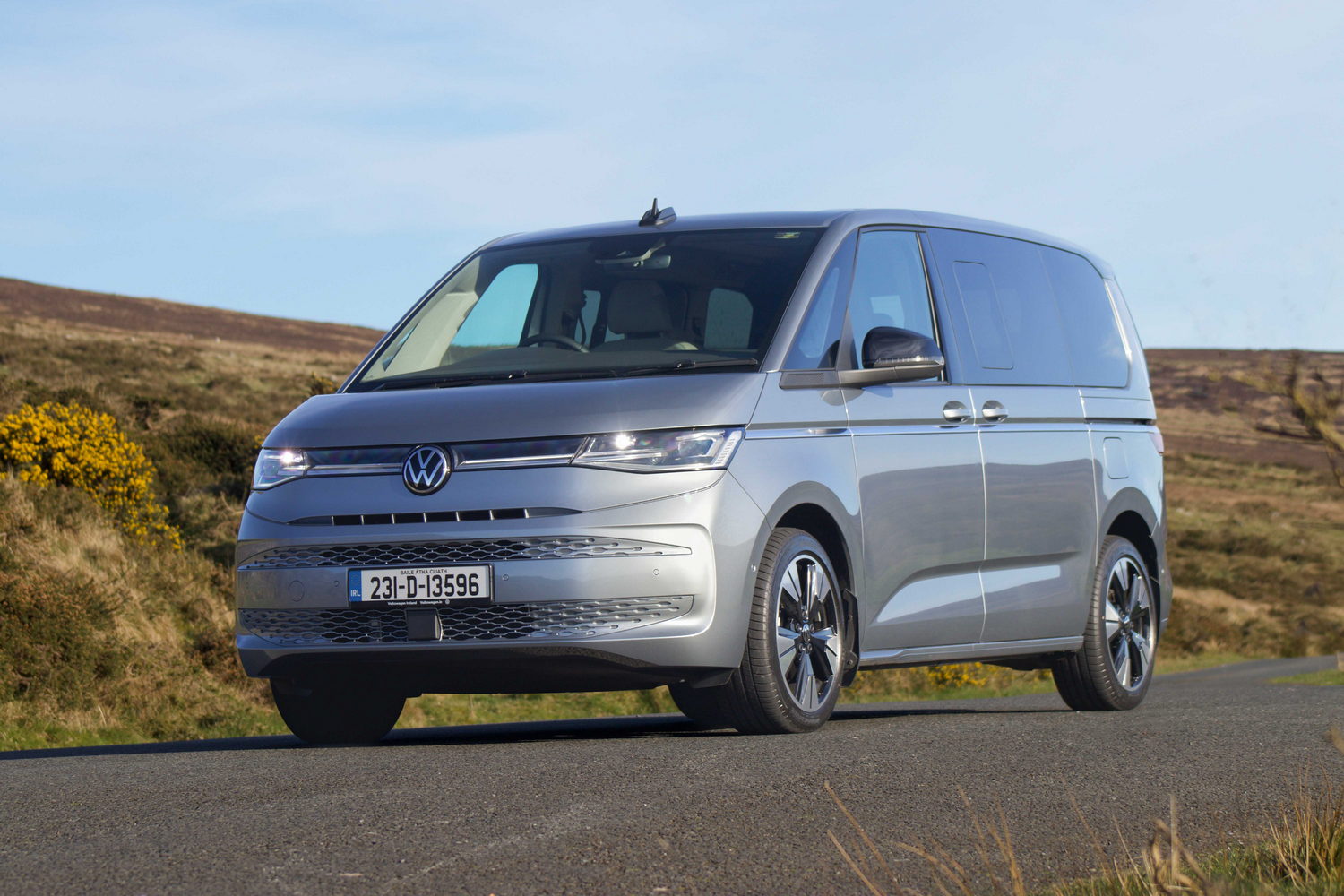For decades, Volkswagen has made sportier versions of its most popular models under the GTI moniker. It’s doing the same with its electric vehicles, only these use the GTX name, and the ID. Buzz is the latest model to receive the performance treatment.
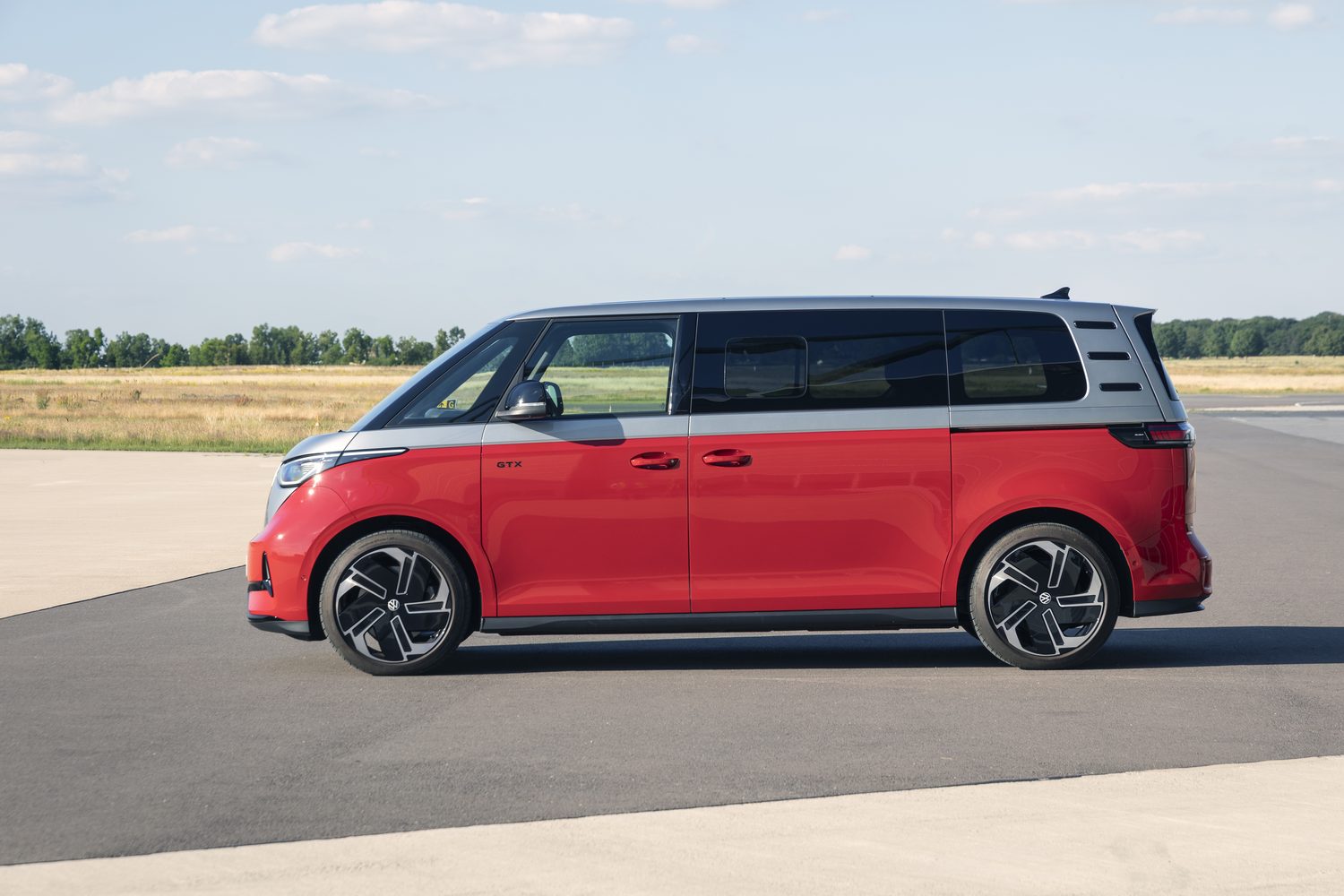
The battery-powered people carrier maintains most of its charming retro-inspired looks but gets more focus to reflect its bump in performance and dual-motor setup. It becomes the most powerful version of the ID. Buzz to date though there are more reasons than pure horsepower to consider the ID. Buzz GTX, as we found out while driving it for the first time on some cold and damp roads in Hannover during the car’s international launch.
What is different about the appearance of the Volkswagen ID. Buzz GTX?
Volkswagen’s designers have given the ID. Buzz GTX a slightly different look to the regular version, though it’s not radically different. The lower section of the front bumper is bespoke, featuring a large honeycomb structure with a gloss black finish and a winglet appearance on either side. Small vertical LED daytime running lights are integrated into the sides of the bumper, taking the shape of two triangles on top of each other to form an arrowhead design. The door mirror housings and badges also receive a high-gloss black finish.
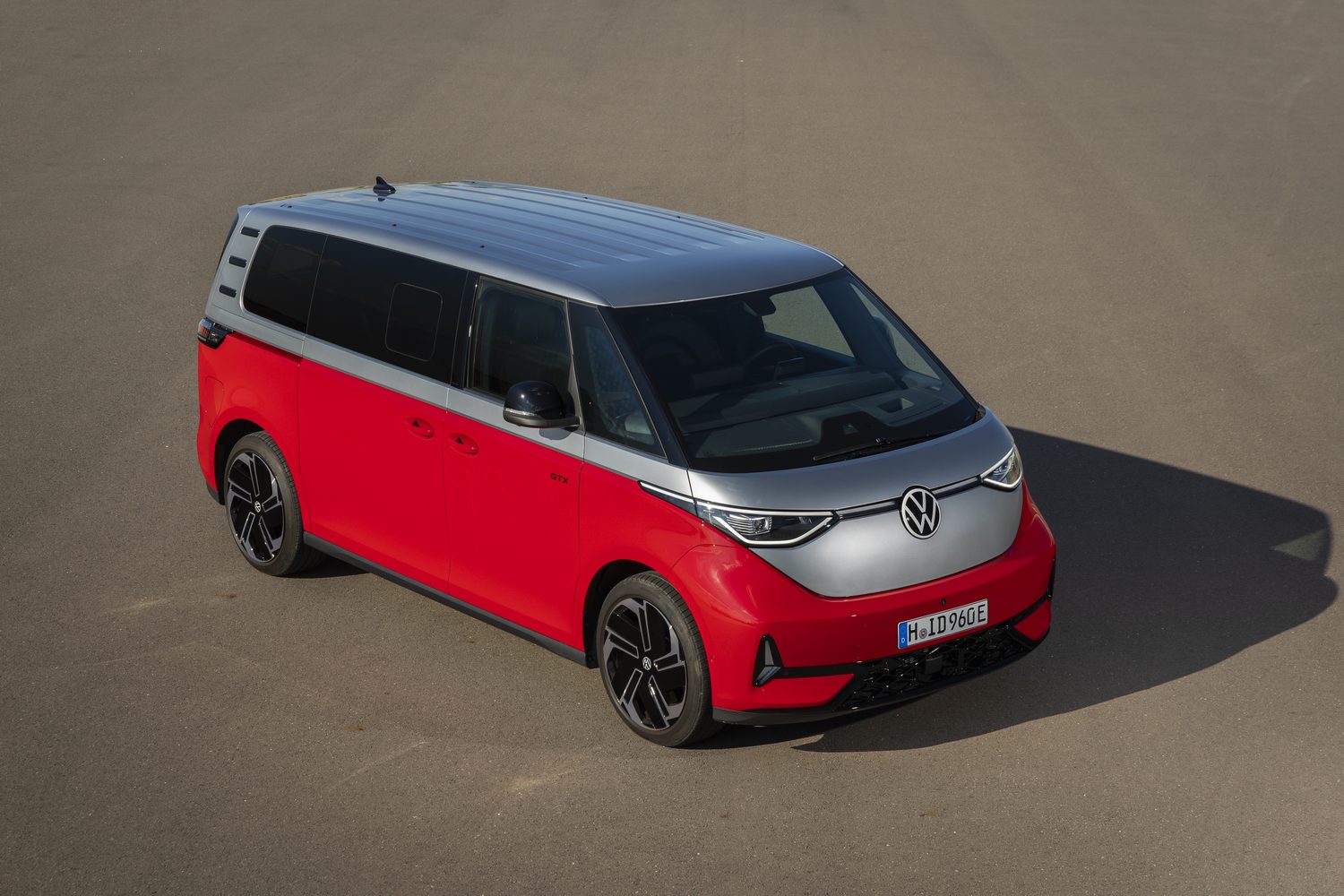
The standard alloy wheel on the GTX is the 20-inch ‘Solna’ design, while buyers can upgrade to one of two new 21-inch designs. The ‘Caracas’ is an all-black option, while the ‘Townsville’ is black with a diamond-cut surface. There is an exclusive Cherry red paint option available for the GTX which can be configured as a solid colour over the entire body or as part of a two-tone package with Mono silver. Other colour options available include Candy white, Mono silver metallic, Deep black pearl effect and Starlight blue metallic.
What’s it like inside the Volkswagen ID. Buzz GTX?
The interior of the GTX is in stark contrast to the bright and colourful cabin of the regular ID. Buzz. To emphasise its sporty nature, the GTX gets darker colours throughout, with seats covered in black ‘ArtVelours Eco’ microfleece, a diamond pattern insert, red stitching on the seams and matching piping. The red stitching continues through onto the dashboard and the steering wheel. The latter also features a GTX badge on the lower spoke. A black headliner - again, exclusive to the GTX version - rounds out the look.
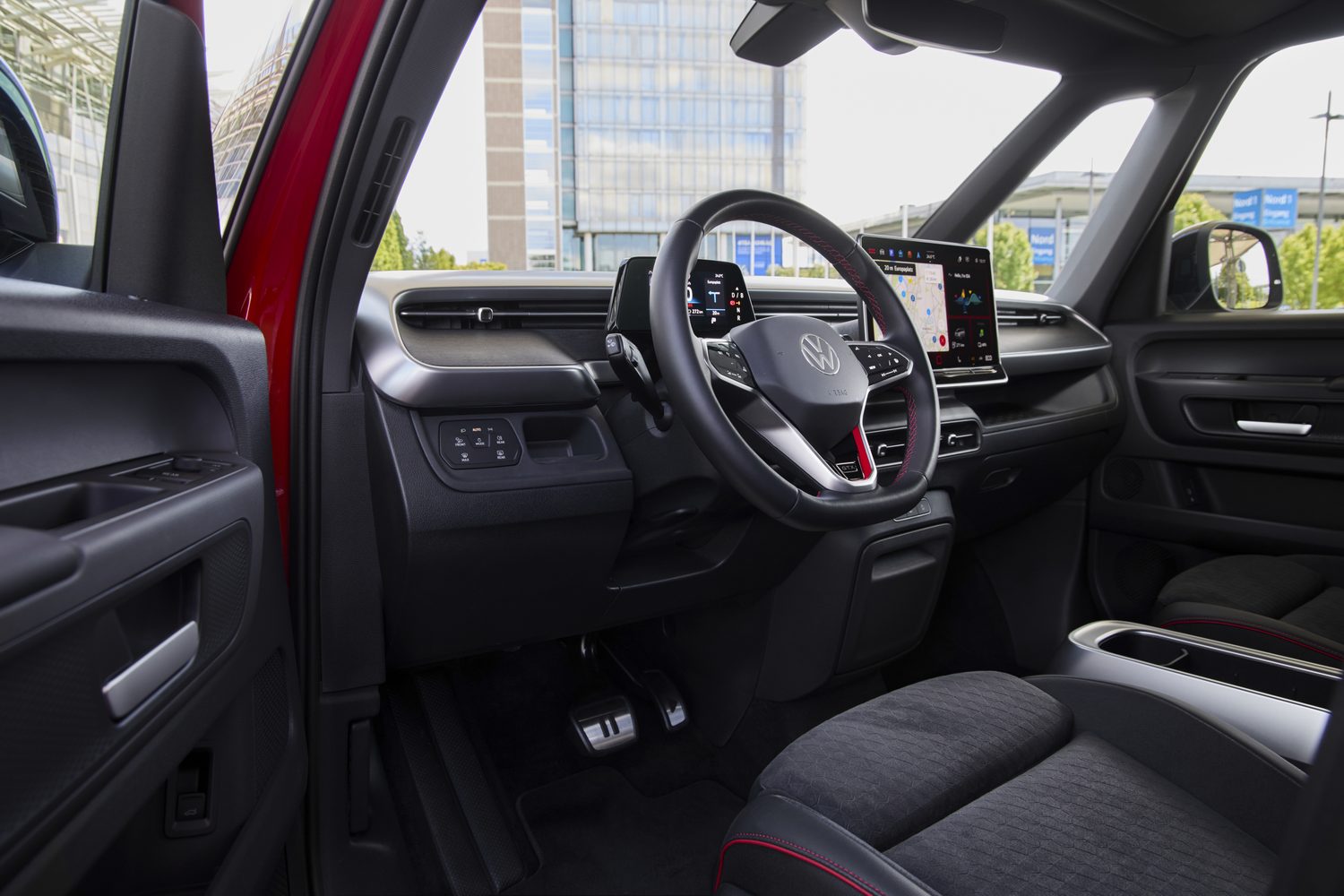
Updates to the wider ID. Buzz range also apply to the GTX, meaning it gets a 12.9-inch touchscreen display at the dashboard’s centre. Benefitting from an illuminated touch bar along its base, where the volume and cabin temperature controls are found, and an improved native infotainment system, it’s a much better user experience than the ID. Buzz initially offered.
The GTX is available in both of the ID. Buzz’s wheelbase lengths, so you can have a choice of seat arrangements. The normal wheelbase is available as a five-seater as before or as a six-seat option consisting of three rows of two seats with a gap between each seat in the first two rows. In the long wheelbase ID. Buzz GTX there is a choice of five-, six- or seven-seat configurations.
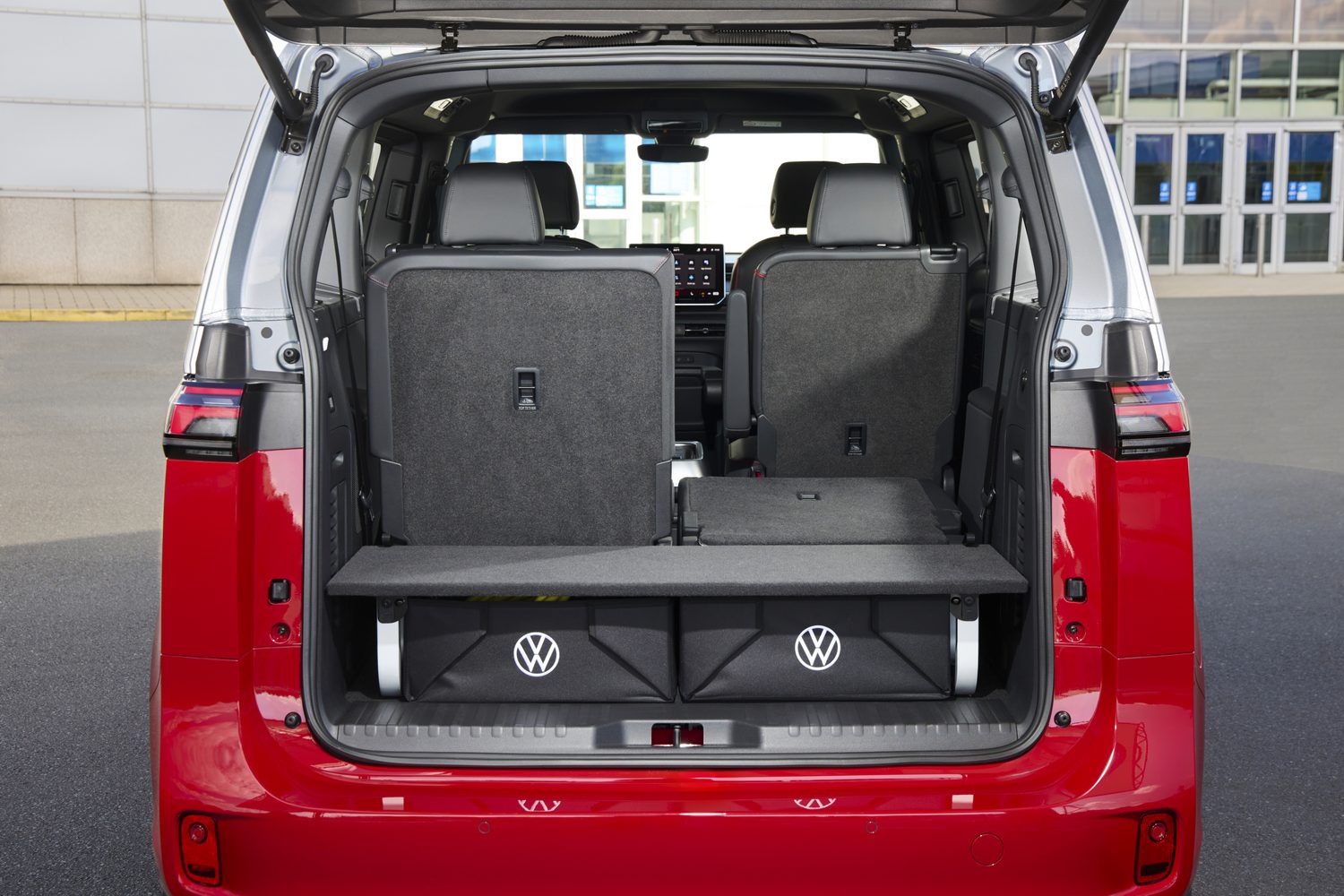
How big is the Volkswagen ID. Buzz GTX?
The standard ID. Buzz GTX is 4,712mm long, with the long wheelbase ID. Buzz GTX measuring in at 4,962mm. Most of the additional length is found in the wheelbase (the space between the front and rear wheels), increasing it from 2,989mm to 3,239mm. When both versions are parked side by side, the difference is subtle but noticeable, yet the long wheelbase model maintains a well-proportioned appearance.
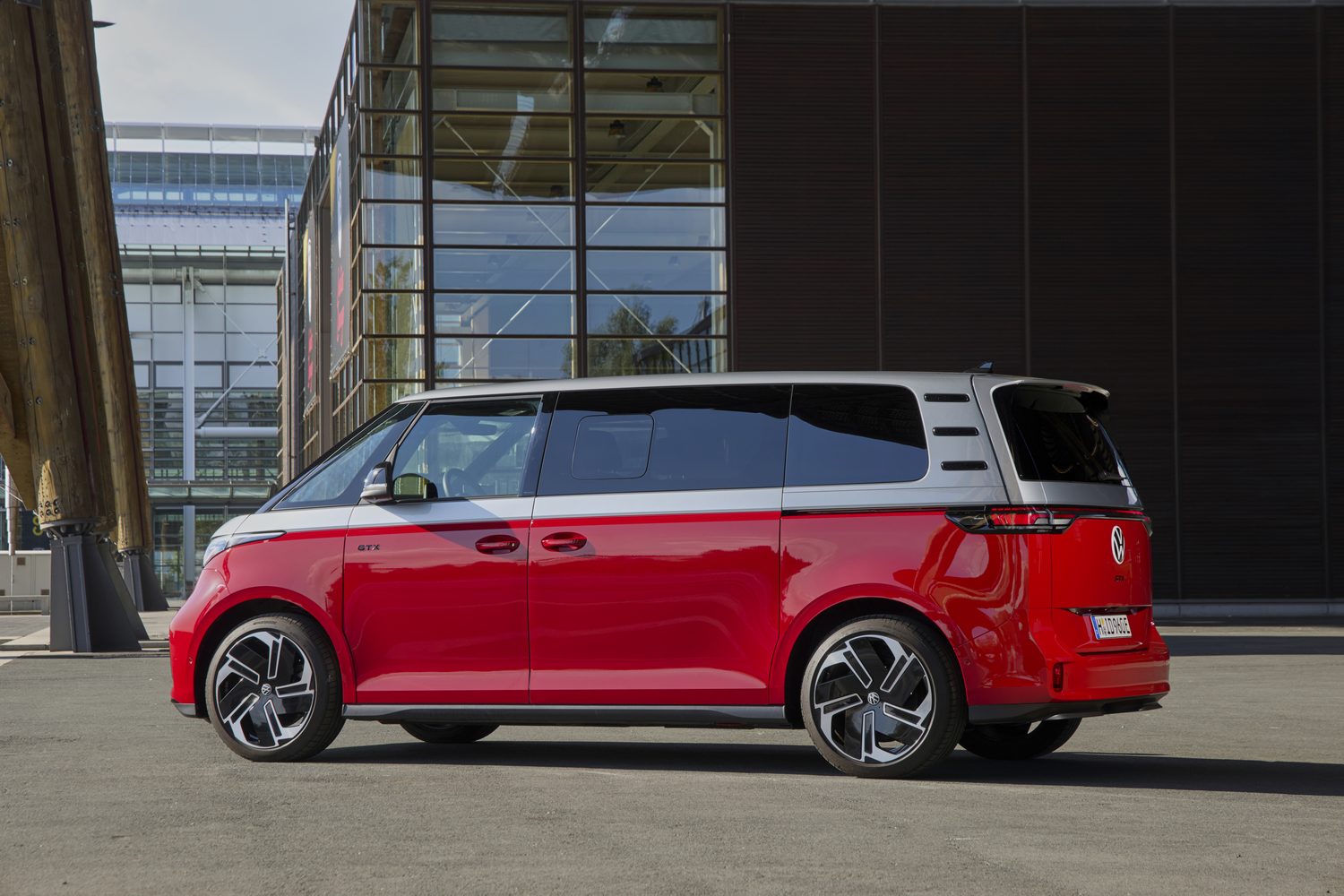
The extra 250mm is distributed between longer sliding rear doors (lengthened by 192mm) and the area beyond the rear wheels. Importantly, the width and height of the ID. Buzz remain unchanged, ensuring it can still access most multi-storey car parks and fit into average parking spaces with ease.
What’s the electric range of the Volkswagen ID. Buzz GTX?
Both the normal and long wheelbase versions of the ID. Buzz GTX use a new battery, but at the time of writing, the GTX variants are still undergoing WLTP certification, and Volkswagen has not yet published the combined driving range. We do expect it to be lower than the single-motor versions of the ID. Buzz, but as the GTX uses an efficient motor on the front axle, it shouldn’t be significantly lower.
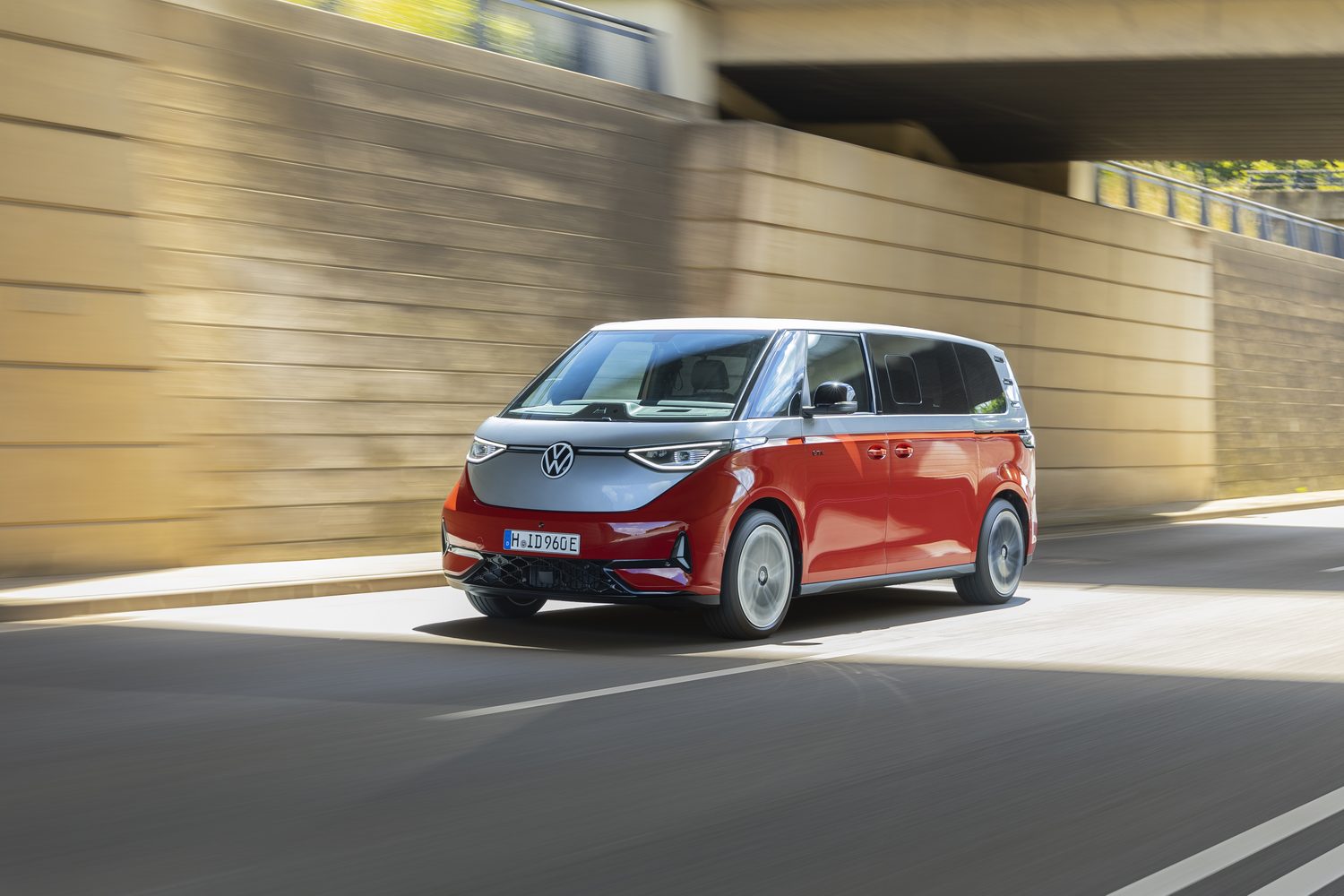
For reference, the standard ID. Buzz uses a 79kWh battery, providing a driving range of between 423- and 462 kilometres. In the case of the long-wheelbase ID. Buzz there is an 86kWh battery that can provide a range of 453-487 kilometres. With the larger capacity battery, there’s a peak DC-charging rate of 200kW, whereas the 79kWh battery maxes out at 185kW.
Driving the Volkswagen ID. Buzz GTX
One of the standout features of the ID. Buzz GTX is the ‘4Motion’ all-wheel-drive system. Unlike mechanically linked all-wheel-drive transmissions, there is no physical drive connection between the front and rear electric motors, but they work in tandem when needed to provide all-wheel traction. Volkswagen uses two types of motors in the GTX, including the latest permanent magnet synchronous motor (PSM) in the rear, known internally as the APP550. This motor alone produces up to 286hp and 560Nm and is supplemented by an asynchronous motor (ASM) on the front, which has maximum outputs of 109hp and 134Nm.
For the majority of the time, the GTX remains in rear-wheel-drive mode, leaving the ASM motor on the front axle in a standby setting, so to speak. Volkswagen uses this type of motor on the front because it consumes very little energy when operating in this way and can instantly come on stream when traction levels at the rear begin to drop.
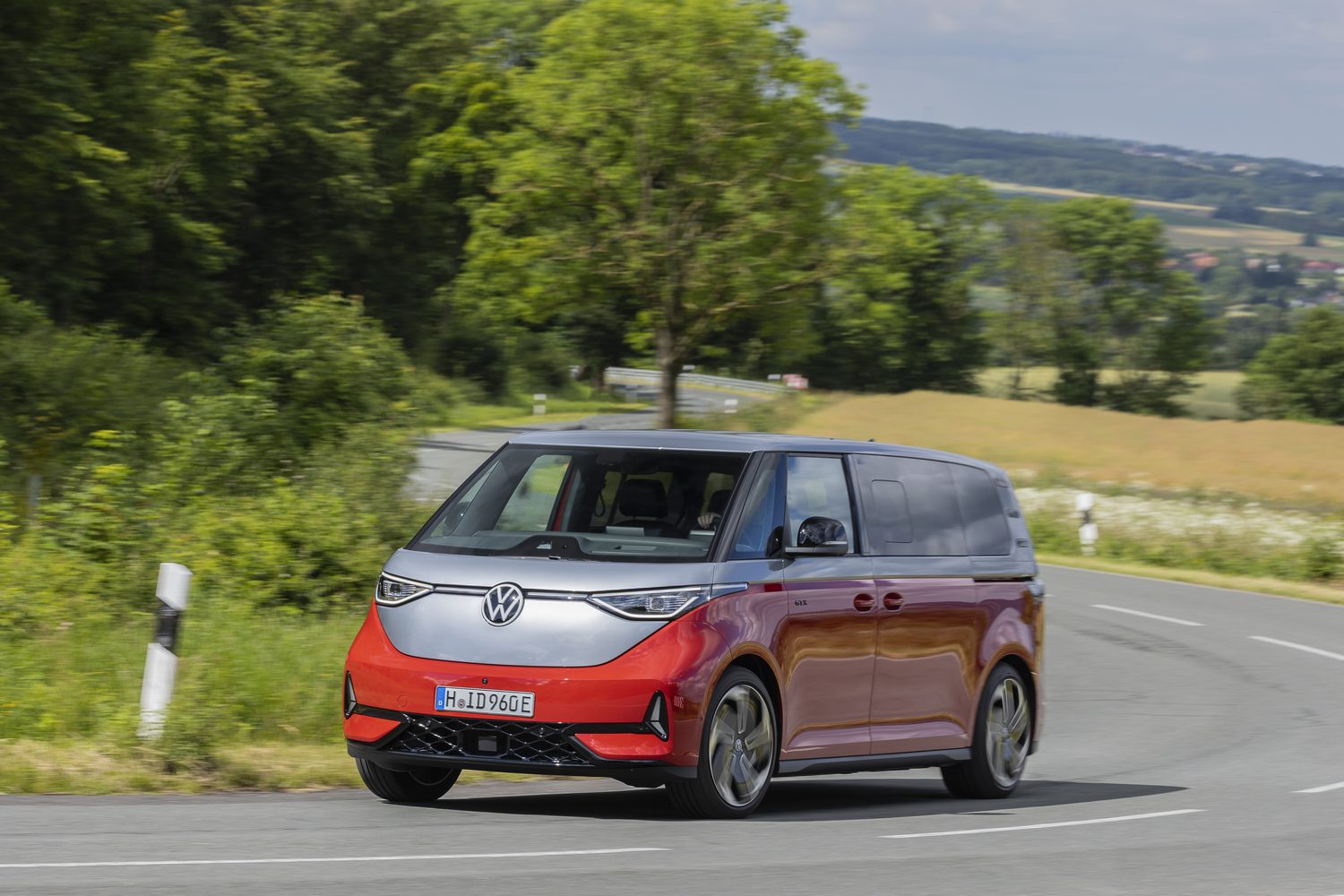
There is an extra bit of kick in comparison to the standard ID. Buzz Pro, notably off the line, plus a little more roll-on performance, but the difference between the two vehicles isn’t as significant as some might expect. The standard-wheelbase ID. Buzz GTX - which is also lighter - will outperform the longer GTX in a sprint from 0-100km/h, taking 6.1 seconds versus 6.5 seconds.
As in the standard model, the ID. Buzz GTX feels planted and stable on the road, even though faster bends. Combine that with the added traction provided by having a second motor to drive the front wheels when needed, and you have a vehicle that is very capable in a multitude of conditions, including more dynamic driving.
Another positive is that the overall comfort levels are good, with bumps being soaked up easily. It is also a relatively quiet car on the move, other than a small bit of road noise from the wide tyres on uneven tarmac. Thankfully it doesn’t get any gimmicky sounds being channelled into the cabin.
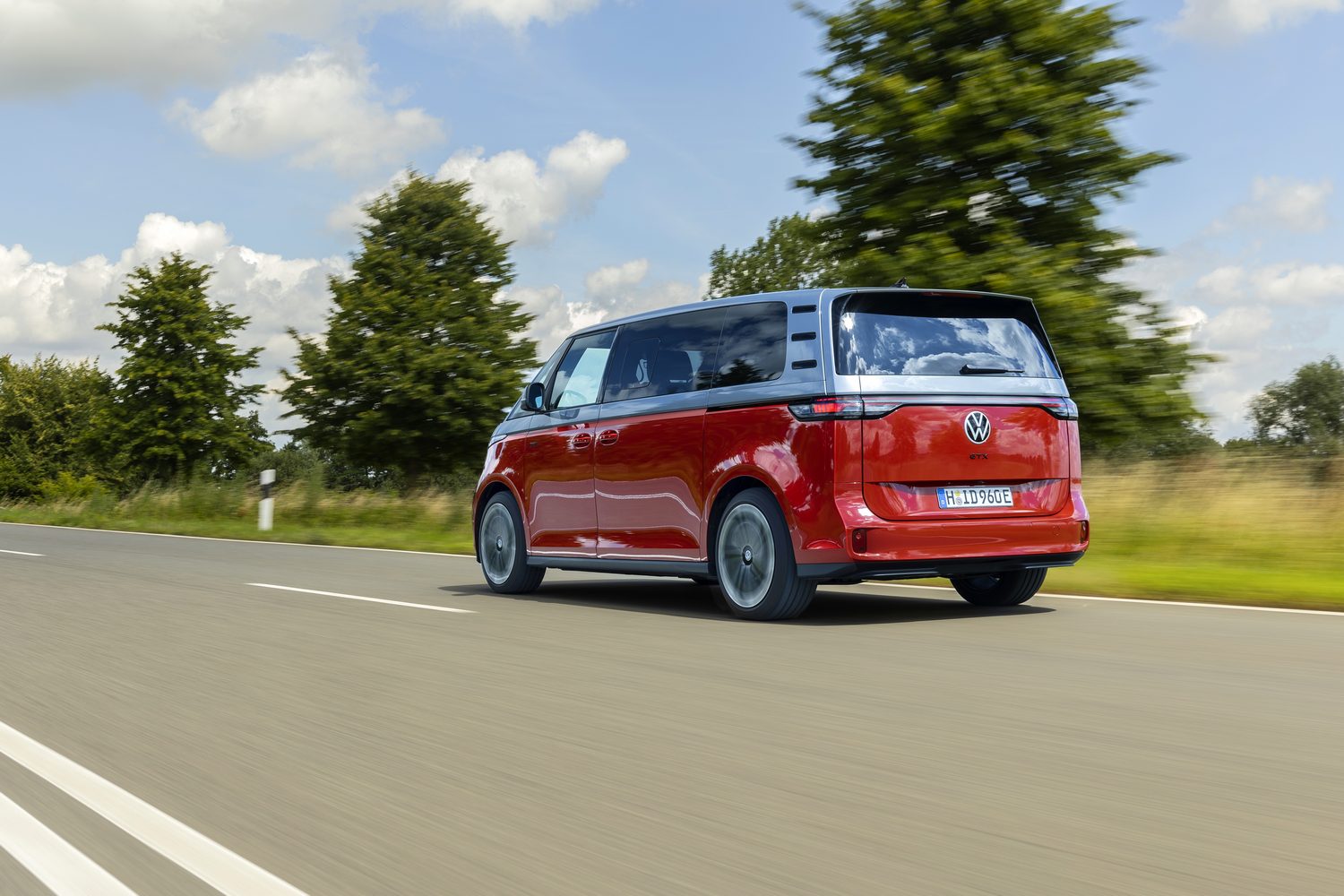
How many child seats can I fit in the Volkswagen ID. Buzz GTX?
In five-seat guise the ID. Buzz GTX only features two ISOFIX mounting points in the outer rear seats - as in the regular model. In the two rearmost seats of the six-seat version, there’s an additional pair of ISOFIX mountings. A seven-seat option is also available in the long-wheelbase model, which offers the same four ISOFIX points in total, as the middle seat in the second row does not have the mounting points - though it’s likely wide enough to accommodate a small booster.
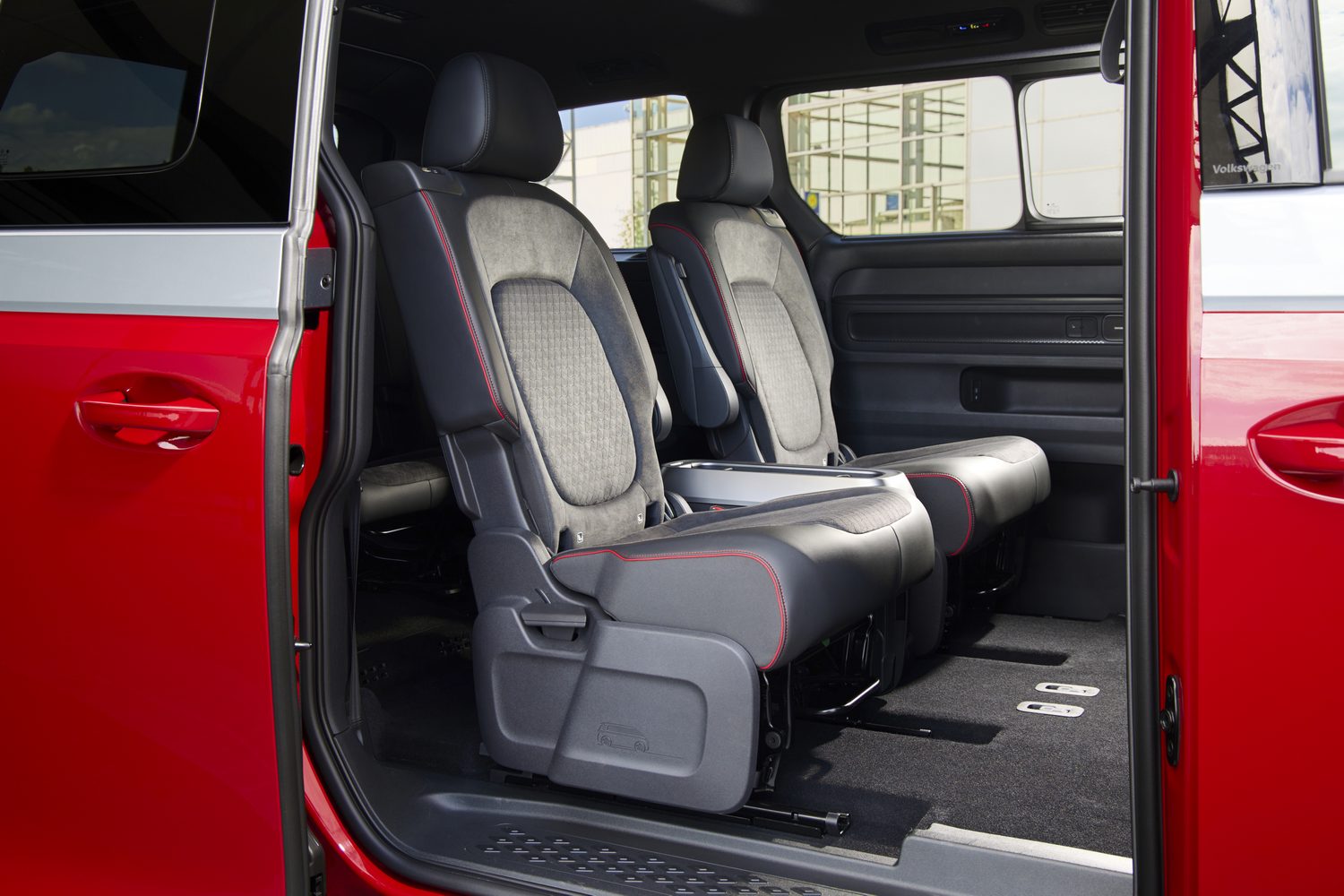
The Volkswagen ID. Buzz GTX’s onboard technology
As part of a 2025 model year update, the ID. Buzz GTX benefits from an improved touchscreen and enhancements to the native infotainment system. Volkswagen has also added ChatGPT integration to bring more depth to the voice assistant.
The optional Travel Assist function combines adaptive cruise control, Emergency Assist (a braking function) and Lane Assist to provide added guidance and support for the driver on the motorway. The system can even conduct automated lane changes at speeds from 90km/h upwards: all the driver has to do is tap the indicator in the direction of the lane they wish to move to, and the vehicle does the rest.
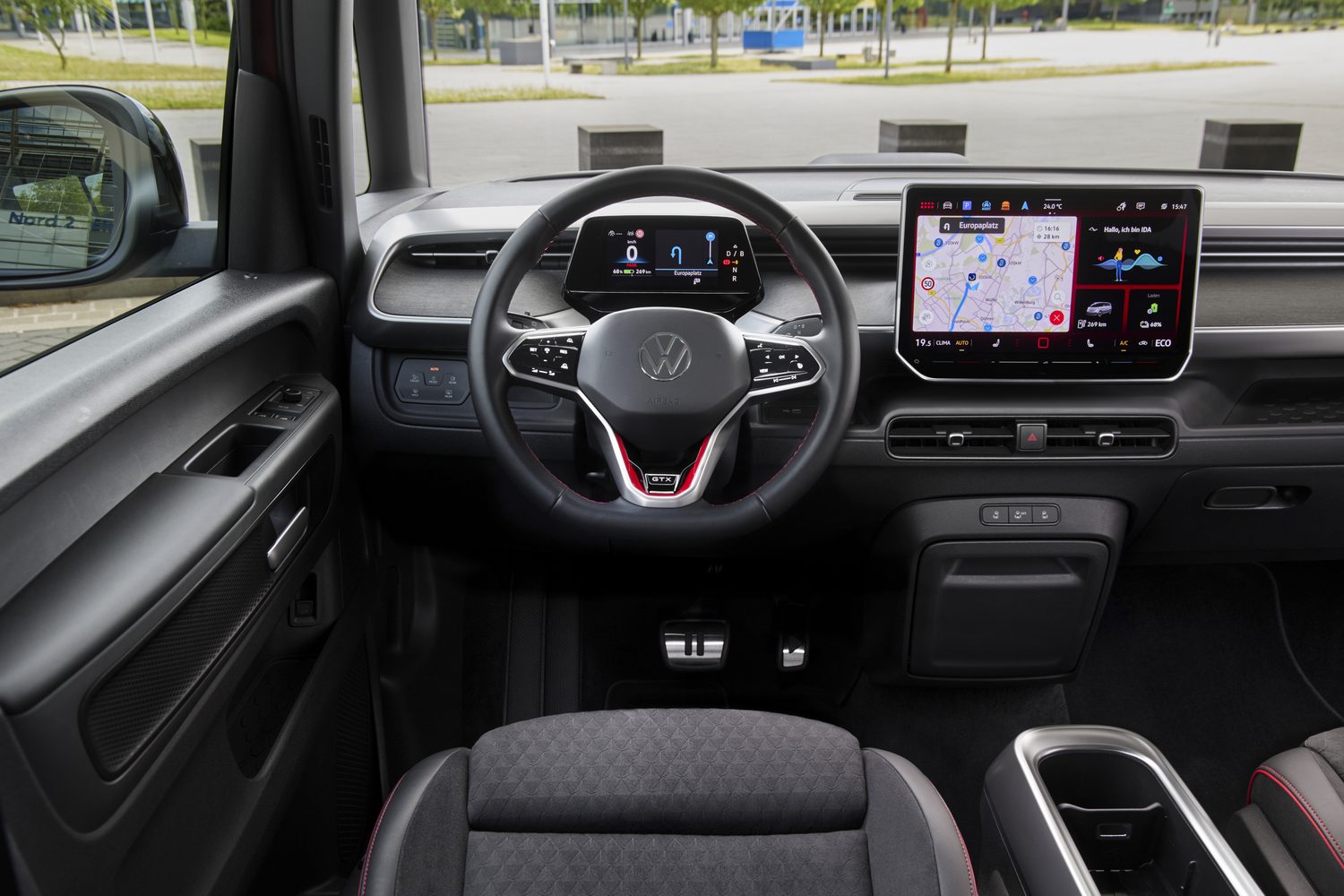
The process isn’t as fast as some drivers might manage, but it is safer as the car continuously checks for other vehicles so it may make nervous drivers feel more at ease on a motorway. Interestingly though, this function is not available on ID. Buzz models that have a third row of seats fitted.
Volkswagen also offers an assisted parking system called Park Assist Pro, which can manage manoeuvring in and out of parallel and bay parking spaces. The latest version is also compatible with a smartphone app that lets the driver control the vehicle from outside. For example, if someone parks too closely to the car and the driver’s door can’t be opened, it’s possible to remotely start the car from the app and move it out of the space.
The reasons you’d buy a Volkswagen ID. Buzz GTX
The GTX specification adds a second motor that brings a modest bump in performance and improves towing ability, so if you need to pull a larger trailer, it makes sense. For some people, having the second motor from a stability perspective is also a plus. Others will buy it for the unique look outside and in.
How much is the Volkswagen ID. Buzz GTX?
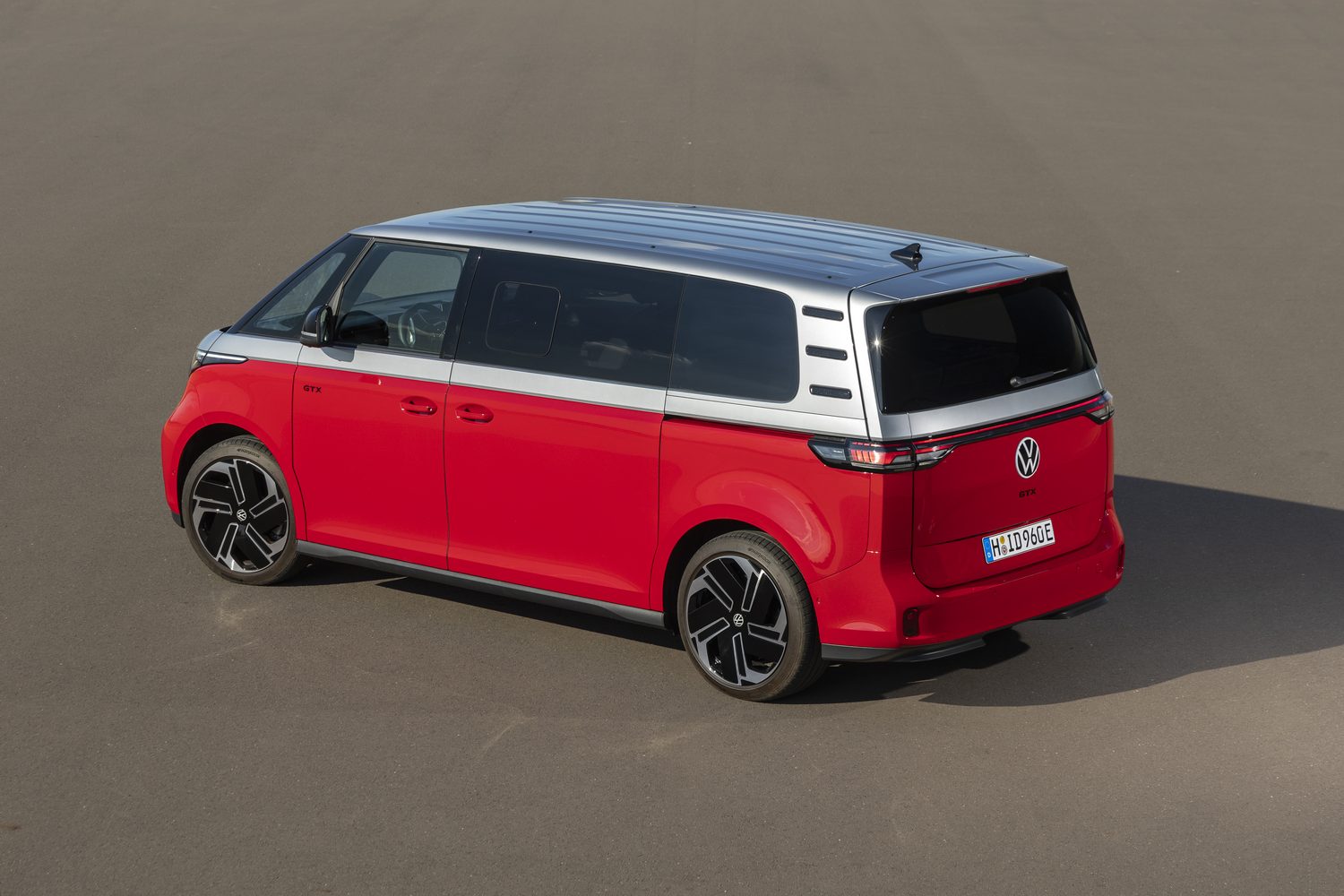
There are no Irish prices for the ID. Buzz GTX at present as the car has not yet gone on sale. The regular model currently has a starting price of €46,495, including incentives, but this is for the 2024 model year, which uses a smaller battery capacity and less powerful motors.
Ask us anything about the Volkswagen ID. Buzz GTX
If there’s anything about the Volkswagen ID. Buzz GTX we haven’t covered, or if you’d like advice on choosing between it and other cars, you can access our (completely free) expert advice service via the Ask Us Anything page. You can also read our review of the long-wheelbase Volkswagen ID. Buzz.

